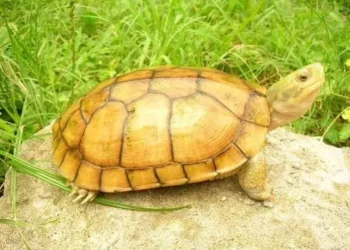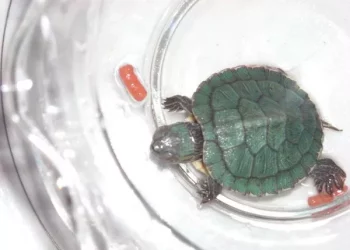Corn snakes, with their striking coloration and relatively docile nature, have earned a reputation as one of the most friendly and manageable pet snakes. Their appeal extends beyond their aesthetic charm to their interactive behaviors, making them a popular choice for both novice and experienced reptile enthusiasts. To fully appreciate the friendliness of corn snakes, it is important to explore their breed characteristics, natural habitats, and the factors that influence their behavior in captivity. This article provides a comprehensive overview of what makes corn snakes so approachable and what you can expect when interacting with these fascinating creatures.
Introduction to Corn Snakes
Before diving into the aspects that contribute to their friendliness, it’s essential to understand what corn snakes are, their characteristics, and their natural behaviors.
Taxonomy and Classification
Corn snakes (Pantherophis guttatus) are a species of rat snake native to the southeastern United States. They belong to the Colubridae family, a diverse group of non-venomous snakes. Corn snakes are often confused with the closely related Eastern Ratsnake, but they are distinguished by their more varied coloration and pattern.
Physical Characteristics
Corn snakes are medium-sized constrictors, typically reaching lengths of 3 to 5 feet (0.9 to 1.5 meters) in captivity, though some individuals may grow slightly longer. They have a slender body with a distinct pattern of reddish-orange and black markings, which can vary depending on the morph (genetic variation) of the snake. Their belly is often a contrasting light color, which is where they get their common name, as the pattern resembles corn kernels.
Lifespan and Growth
In captivity, corn snakes have a lifespan of 15 to 20 years, which is relatively long for a pet snake. They grow steadily throughout their lives, with juveniles growing more rapidly than adults. Proper care and habitat conditions can influence their health and longevity.
Natural Habitat and Behavior
Understanding the natural habitat and behavior of corn snakes provides insight into why they can be such friendly pets.
Habitat and Range
Corn snakes are native to a range of habitats in the southeastern United States, including forests, grasslands, and agricultural areas. They are terrestrial snakes, meaning they primarily live on the ground, and they are known for their ability to adapt to various environments.
Behavior in the Wild
In the wild, corn snakes are solitary creatures with a diet primarily consisting of small mammals, birds, and reptiles. They are non-aggressive and rely on their camouflage to avoid predators. Their natural behavior includes burrowing and hiding in leaf litter or under logs, which provides them with security and helps regulate their body temperature.
Interaction with Humans
While corn snakes in the wild are shy and reclusive, their behavior changes significantly in captivity. They become accustomed to human interaction and can develop a level of trust and comfort when handled regularly.
Factors Influencing Friendliness in Captivity
Several factors contribute to the friendliness of corn snakes in captivity, including their temperament, socialization, and handling.
Temperament
Corn snakes are known for their generally calm and placid temperament. Unlike some other snake species that may be more defensive or aggressive, corn snakes are often tolerant of handling and interaction. This temperament is one of the reasons they are recommended for beginners and experienced keepers alike.
Socialization and Handling
The friendliness of a corn snake can be significantly influenced by how it is handled and socialized from a young age. Regular, gentle handling helps the snake become accustomed to human interaction and reduces stress. It is important to handle corn snakes with care, allowing them to explore and interact at their own pace.
Environmental Enrichment
A well-designed habitat with appropriate environmental enrichment can also impact a corn snake’s behavior. Providing hiding spots, climbing opportunities, and a varied environment helps reduce stress and promote natural behaviors. A stressed or uncomfortable snake is less likely to exhibit friendly behaviors, so maintaining a suitable habitat is crucial.
Understanding Corn Snake Behavior
To foster a friendly relationship with a corn snake, it is important to understand their behavior and body language.
Body Language and Signaling
Corn snakes use body language to communicate their mood and needs. For instance:
Hooding: If a corn snake hoods or flattens its body, it may be feeling threatened or defensive. This is a sign that the snake is not comfortable and should not be handled until it calms down.
Flicking Tongue: The snake flicks its tongue to gather information about its environment. This behavior is normal and indicates curiosity rather than aggression.
Coiling: When a corn snake coils around your hand or arm, it is often a sign of comfort and trust. However, be cautious as coiling can also indicate a defensive posture if the snake feels threatened.
Feeding and Handling
Feeding times can also affect a corn snake’s behavior. It is generally advisable to handle the snake only a day or two after feeding, as handling immediately before or after feeding can cause stress or lead to regurgitation.
Recognizing Stress and Aggression
Understanding the signs of stress or aggression is important for maintaining a friendly relationship with your corn snake. Signs of stress include rapid breathing, hiding, or defensive postures. Aggression, though rare in corn snakes, might manifest as striking or biting. In such cases, it is important to reassess handling techniques and environmental conditions.
Building a Positive Relationship
Developing a positive relationship with a corn snake involves consistent and respectful interaction.
Consistent Handling
Regular handling helps build trust between the snake and its owner. Begin with short handling sessions and gradually increase the duration as the snake becomes more comfortable. Always handle the snake gently and avoid sudden movements that might startle it.
See Also: Do Corn Snakes Have Health Problems?
Creating a Safe Environment
Ensure that the snake’s enclosure is secure and comfortable. An appropriately sized enclosure with proper temperature, humidity, and hiding spots will help the snake feel secure and less stressed. A healthy and well-cared-for snake is more likely to exhibit friendly behaviors.
Understanding Individual Differences
While corn snakes are generally friendly, individual personalities can vary. Some may be more tolerant of handling than others. Pay attention to your snake’s unique behavior and adjust your interactions accordingly.
Seeking Professional Advice
If you encounter issues with your corn snake’s behavior or if it displays signs of stress or aggression, consider consulting a reptile veterinarian or an experienced snake handler. They can provide guidance on improving handling techniques and addressing any underlying issues.
Benefits of Owning a Friendly Corn Snake
Owning a friendly corn snake can be a rewarding experience, offering several benefits:
Low Maintenance
Corn snakes are relatively low-maintenance pets compared to some other animals. They do not require daily exercise and can be left alone during the day, making them suitable for people with busy lifestyles.
Educational Value
Corn snakes provide an opportunity to learn about reptiles, their behaviors, and their care. They can be a valuable educational tool for children and adults alike, fostering a greater appreciation for wildlife.
Unique Companionship
The bond that forms between a snake and its owner can be unique and fulfilling. Observing a corn snake’s behavior and interacting with it regularly can be a source of enjoyment and relaxation.
Conclusion
Corn snakes are among the most friendly and approachable of pet snakes, thanks to their calm demeanor, adaptability to captivity, and interactive nature. By understanding their breed characteristics, natural behaviors, and the factors that influence their friendliness, you can foster a positive and rewarding relationship with your corn snake. Regular handling, a well-maintained habitat, and a respectful approach to their needs are key to ensuring that your corn snake remains a happy and affectionate companion. Whether you are a seasoned reptile enthusiast or a first-time snake owner, the corn snake’s friendly nature makes it a compelling choice for a pet, offering both charm and companionship in equal measure.
Related Topics:























